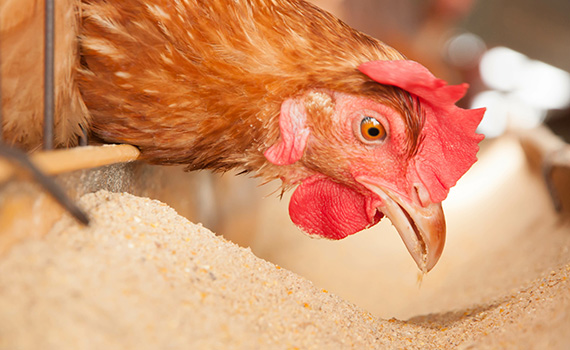Specialists discuss impact of new FDA guidelines

Emphasize need to communicate with customers, consumers
In anticipation of the new FDA guidelines for antibiotic usage, Zoetis Inc. teamed with Watt Global Media last year to organize a panel discussion about the future of antibiotics in poultry. Following are highlights.
Panelists
William Flynn, DVM, MS, deputy director for science policy, Center for Veterinary Medicine, Food and Drug Administration
G. Donald Ritter, DVM, director of health services, Mountaire Farms
Randy Singer, DVM, MPVM, PhD, associate professor of epidemiology, University of Minnesota
Stephen Sutherland, DVM, senior director of regulatory affairs, Zoetis
Q: Is public concern about antibiotic resistance one of the driving forces behind the FDA’s voluntary strategy?
Flynn: The general public has concerns about using antibiotics in food-producing animals and some uncertainty as to why those drugs, particularly antibiotics administered in feed, are being used and perhaps overused.
One way to alleviate these concerns is to have a licensed veterinarian oversee the use of antibiotics that are considered medically important to human health, and that’s what we have proposed. If an antibiotic is on the medically important list, its use should require a prescription or, if it’s used in or on feed, a Veterinary Feed Directive (VFD), from a licensed veterinarian.
From the FDA’s standpoint, we believe that having a veterinarian’s involvement in the use of these antibiotics is important and helps ensure that diseases are being appropriately diagnosed and managed.
Q: The use of antibiotics for feed efficiency and growth promotion will be phased out if those drugs are on the medically important list, although those same antibiotics may still be used if the product is labelled for the treatment, control or prevention of a specific disease. What impact will this have on the poultry industry?
Singer: There’s a misconception that the use of antibiotics for growth promotion and feed efficiency is for economic purposes only. That isn’t a fair description.
These antibiotics also do a great job of stabilizing gut bacteria, which helps keep the animal healthy. That’s part of the reason why the animal has better feed efficiency and grows faster. Now we have to find alternatives to help maintain a healthy gut in young chickens.
There’s probably a more negative association in the public’s mind about how chickens are raised and a lack of understanding that commercial chickens are managed as a flock.
The public needs to better understand how chickens are raised, that disease prevention and control is critical to maintaining flock health, that we have many management strategies in place for keeping flocks healthy and that antibiotics are sometimes an integral part of that strategy.
Flynn: You need to be able to deliver a drug through the feed or water in order to be able to practically administer it to a flock. That’s a challenge just in terms of public perception and dealing with managing disease in commercial chickens.
Singer: Even as labels for some of these in-feed products change, there may still be the perception that they are being used for growth promotion and feed efficiency, when they’re not. We need to make sure that we’re out in front as veterinarians about this — that in-feed treatment is one way to deliver antibiotics specifically for disease prevention and control.
Q: The FDA seems to be focusing primarily on medically important antimicrobials that are administered in feed or in water. What about medically important antimicrobials that are given orally or that are injected?
Flynn: It is correct that currently we are focused on medically important antimicrobials that are administered in either feed or water, primarily because they inherently involve drugs that will be given to larger groups of animals, and there’s a bit more concern regarding the possible development of resistance with antimicrobials administered this way. These will be transitioned from an over-the-counter status to a prescription or VFD status.
There are a limited number of drugs available that are designed for single-animal administration, such as parenteral products, which would include injectable and some oral drugs. We don’t have any plans at this time to change the status on those. At some point in the future, though, I would expect that these products would also be transitioned to prescription status.
Q: Dr. Flynn, please define treatment, control and prevention from the FDA’s perspective.
Flynn: Treatment is straightforward. It’s administering the drug to a clinically ill animal, with the expectation that there is going to be a positive response.
Control would be a situation where a handful of chickens within a flock are clinically, overtly ill. The other chickens appear to be okay, but an outbreak is developing and you need to treat the entire flock to control the outbreak. That’s generally how we use the term control.
Prevention would involve a situation where none of the chickens in a flock are clinically ill and have no signs of disease, but risk factors are considered. This is where veterinarians and the experience of producers come in to play; they know the history of those animals, where they came from and how far they travelled in terms of shipping. The decision whether to treat is based on the risk of a disease outbreak in that flock.
Q: So preventive use of an antibiotic on the medically important list is considered judicious use?
Flynn: Disease prevention is not the use of drugs to prevent whatever disease might come along. That’s not at all what we’re talking about here. We wouldn’t consider that judicious use.
It’s when a veterinarian believes that a flock of chickens is at risk of being exposed and having an outbreak of a disease; based on that risk, you make the decision that preventive administration of an antibiotic is warranted to prevent the outbreak. There’s knowledge and experience that goes into that decision, and that’s where the value of having a veterinarian involved comes in.
Sutherland: Judicious use is not only an effective tool for minimizing the development of resistance, which benefits public health, it also helps preserve the long-term effectiveness of antibiotics for use in animals.
We also need to protect the important indications we have for existing antimicrobials —
for prevention as well as treatment and control.
Singer: I agree that maintaining the disease-prevention claim is critical, especially when veterinary oversight is involved.
The veterinarian understands the disease process and knows when a population of animals is likely to break with a specific disease. We need to know that we have those antibiotics available to prevent the disease from occurring. I would rather see us using them to keep the flock healthy rather than worry about treating and controlling disease once it’s broken.
Ritter: There are specific diseases in the chicken intestine that almost require antibiotics to prevent and control. If you wait until your flock is ill and mortality occurs, treating at that point is too little too late. You’re much better off using targeted antibiotic therapy early in a bird’s life.
We’re going to use the least amount of antibiotics at targeted times to prevent and control — and hopefully not treat — disease. In population medicine, you need to prevent and control disease to be successful. You can’t have all your chickens sick while you’re trying to treat them and say that’s a good poultry health and welfare program. That’s not the way it works.
Q: Give an example of a disease affecting poultry flocks that requires preventive treatment.
Ritter: Clostridial enteritis. When we put chickens in a building, they’re first going to get infected with coccidiosis, an intestinal parasite that has about a 7-day life cycle, then another wave of cycling at 14 days and maybe even a bigger wave at 21 days.
Coccidial cycling disrupts the gut and leads to bacterial imbalance. Excess mucus is produced, which is food for clostridium. We know clostridial enteritis is going to be a problem because it’s tied to coccidial cycling. We also know that if we treat with antibiotics at specific times, we can prevent animal suffering and death from clostridium, which is likely to occur in most of the flock.
We’re trying to prevent illness and death from clostridial enteritis before it occurs. This is where prevention and control of disease is of paramount importance to a successful poultry health and welfare program. Waiting for birds to get sick is not what veterinarians want to do. That’s not a way to be successful.
You know, there are people who choose to raise chickens without antibiotics and they have higher mortality than the programs that use antibiotics because they have a lot of clostridial enteritis problems in their flocks.
Q: What about alternatives to antibiotics?
Ritter: I’ve done a lot of work with antibiotic alternatives. There’s a laundry list of products including oils, botanicals and organic acids. They have functions in the gut and while they may look good in studies, they just don’t act the same way in the field. There are no standards for them and many lack quality control. When we use something that is not FDA regulated, it’s the wild, wild West.
When we use an approved antibiotic, we know what it’s going to do and that it’s going to do it every time, at the dose prescribed. It’s going to work in the same way because it’s been vetted out. It’s been through the rigors.
As a producer representative, however, I’m very concerned that we’re not going to have enough products down the road, especially if we keep picking them off one by one.
Sutherland: From an R&D investment perspective, drug companies will be hard-pressed to invest in the development of drugs that would be on the medically important list because of regulatory uncertainty.
I’d predict that the focus will be more on non-medically important antibiotics and non-antibiotics — trying to find ways to treat the disease without using traditional antibiotics. We certainly are investing in alternatives that will help maintain feed efficiency and growth promotion.
There will be some focus as well on vaccines and the development of novel biologicals for disease prevention and control.
Q: Let’s get back to public perception. What needs to be done regarding consumer education about the use of antibiotics in commercial poultry?
Singer: There needs to be a public education campaign to explain that when we’re talking about risks, we’re talking about the chance that antibiotic resistance develops — we’re not talking about the presence of antibiotics in meat. There seems to be a misconception that when antibiotics are used in animal production, the consumer is ingesting the antibiotic. That is not the case; there are very strict regulations about that.
The public needs to better understand animal production and that the preventive use of an antibiotic — even in the absence of disease — is administered with the understanding that a disease is likely to occur at that time due to a specific organism and that it’s a health issue for the flocks.
Flynn: The science surrounding antimicrobial resistance has been debated for literally decades. It’s a consistent, circular debate and we’ve all been arguing over whether there’s a smoking gun. Our view at the FDA is that there is enough understanding that all uses of antimicrobials — in animals and people — may affect resistance. The guidelines are intended to move us forward.
Each segment of the poultry industry needs to step up and do its part to mitigate the risk. This issue is not going to go away, so let’s work in a proactive, collaborative way.
It’s in everyone’s interest if we are responsive to public health concerns and move forward. But we have to do it in a way that pays attention to and accounts for the impact on animal health as well as on the public.
Singer: We’re trying to raise healthy animals to feed a healthy human population. Health is a continuum — it’s the animal’s health, it’s human health and the two are interrelated. Any antibiotic administration we make is going to have the potential to select for resistance.
For an educational campaign, we need to stop being defensive about the use of antibiotics. Instead, we need to acknowledge that the use of antibiotics in food animals can have an effect on resistance, but emphasize that we are trying to minimize that risk by using antibiotics judiciously.
Ritter: Issues involving the use of antibiotics in food animals is in the newspapers, on the Internet and it’s a major concern for some of our customers. Many poultry companies, especially those that are branded, are already involving veterinarians by having them talk to customers. It’s critical that the antibiotic discussion is complete and transparent.
Our customers need to understand that the antibiotics we use for gut health are not in the meat they’re buying from us and that we need to keep flocks healthy to produce healthy meat. That’s why we use these antibiotics.
If you explain this to customers, they really understand. They also see that chickens are not as healthy when they are from companies that have removed antibiotics from their poultry health and welfare programs. Those companies have higher mortality and a higher condemnation rate at processing. Customers would rather buy meat from healthy chickens instead of from flocks that didn’t receive antibiotics and are not as healthy. That’s generally the outcome if the discussion is thorough.
Sutherland: Research we’ve conducted at Zoetis has shown that the veterinarian is highly trusted by the public. There’s a tremendous amount of confidence in the veterinary profession. Our research also indicates that when consumers know that a veterinarian is involved in the use of medically important antibiotics and the decision-making process, they will have increased confidence in how these products are used.
I agree that a key factor is communication as well as close cooperation between the pharmaceutical industry, the poultry industry, veterinarians and the FDA. Working together, I think we’re going to be a lot more successful.
Ritter: Yes, the public has a lot of trust in veterinarians and wants to hear from them. That’s part of our role going forward — to take a more active role in communicating with our customers, within our industry and outside our industry.
Most people think chickens come in a shrink-wrap bag. They don’t think about where it comes from or the intestinal challenges the animal faces or about how we deal with it. We’ve got to talk about it. That’s what we have got to do.
Posted on January 22, 2014
 We’re glad you’re enjoying
We’re glad you’re enjoying









